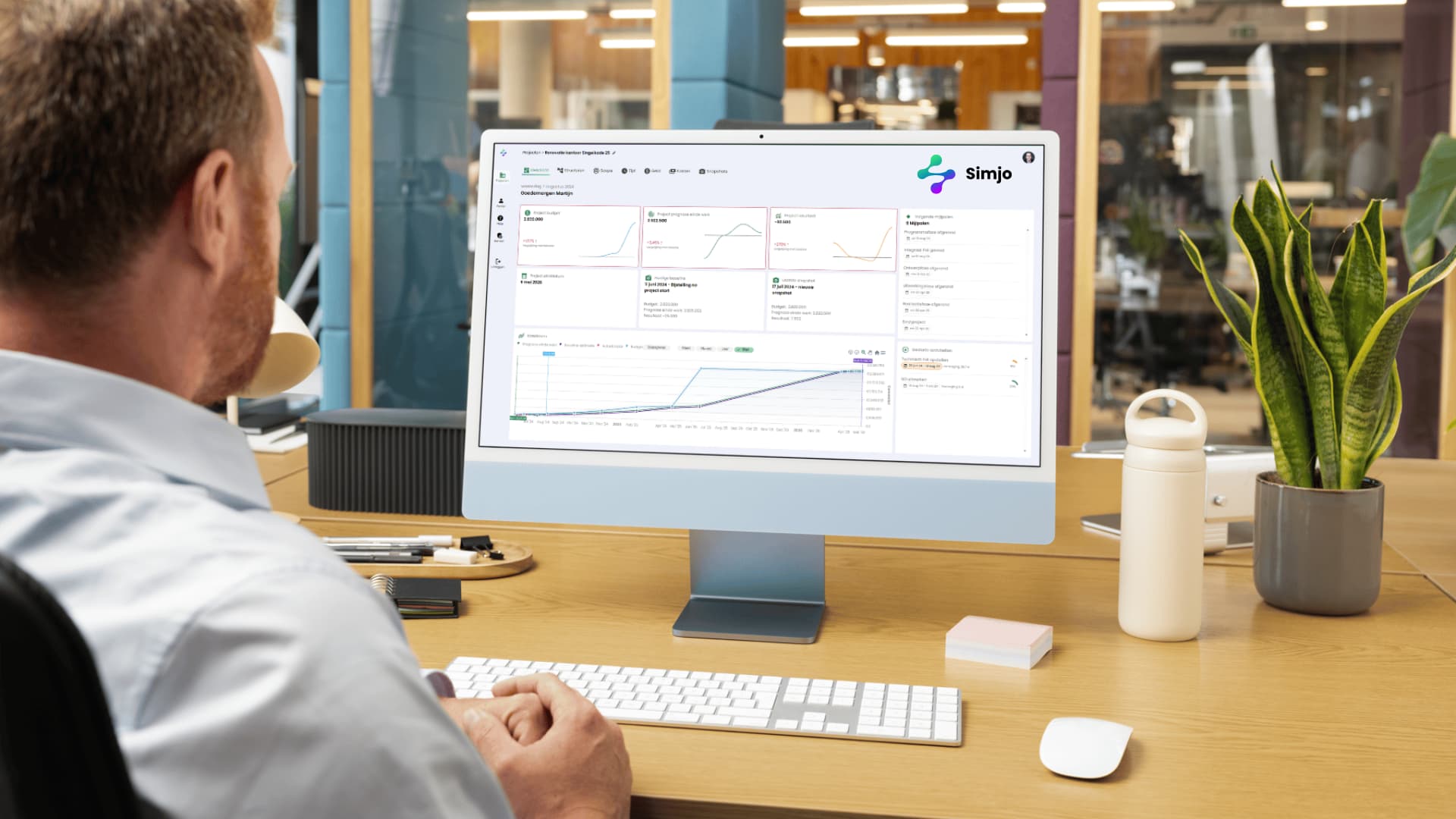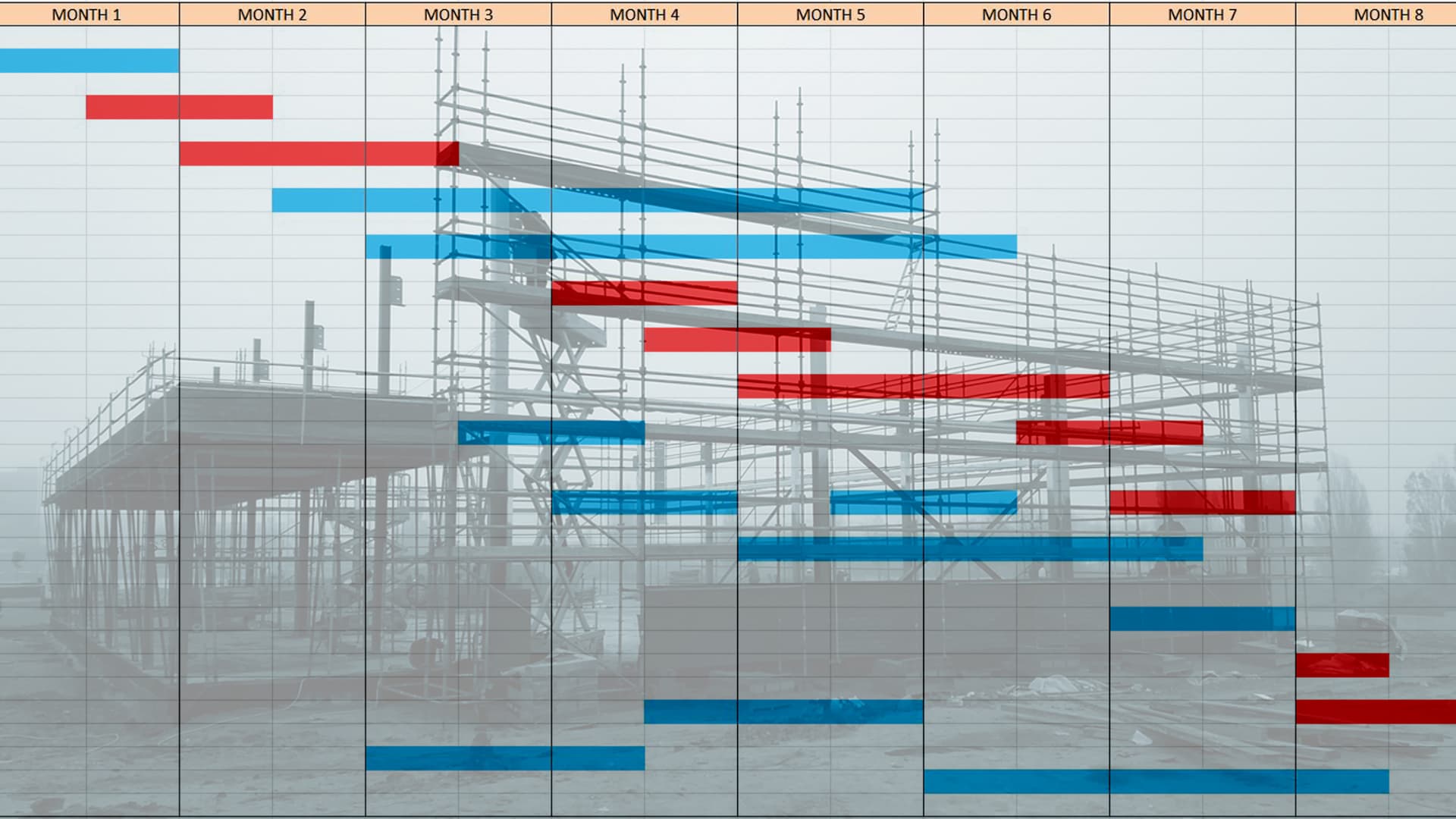Blogs
What is Building Information Management (BIM)?

We often talk about BIM in our work, but what does that stand for? It stands for Building Information Modeling, and it is a process by which you create and manage digital models of buildings. It is an advanced method that allows you to collect all relevant information about a construction project in one central place and share it with all stakeholders.
BIM enables all parties involved to collaborate more efficiently throughout the life cycle of a building, from design to construction and maintenance.
7 Applications of BIM That Make You Build More Efficiently
In the construction industry, it has become increasingly important to work efficiently and cost-effectively. Here are some examples of where BIM helps you build more efficiently.
1. Less error-prone
For construction companies, BIM offers numerous benefits and opportunities. First, using BIM ensures that the team makes fewer mistakes during the design and construction process.
2. Better project management
An example of where BIM helps construction companies work more efficiently is through better project management. In other words, using BIM, you integrate all relevant information about the project into one model.
This makes it easy for everyone involved in the project to access the latest information and keep track of changes. This allows you to make faster and more informed decisions.
3. Optimization of your construction schedule
Another example is the use of BIM in optimizing your construction planning. By integrating all relevant data and models into one system, you can identify potential bottlenecks before or during construction work. This helps reduce delays and cost overruns.
4. Preventing repairs
By creating a virtual model, you are also better able to identify and resolve any conflicts or problems early on. In doing so, you avoid costly repair work on the construction site.
5. Better collaboration with all disciplines
In addition, BIM promotes collaboration between different disciplines within a construction project. Architects, engineers, contractors, and suppliers can all give their input to the same model, creating greater coordination and synergy. This leads to better decision-making, higher productivity, and ultimately faster project delivery.
6. Quality control and clash detection
BIM also provides opportunities for quality control and clash detection. Through clash detection, BIM can automatically check for conflicts between different elements in the design, such as piping running through a wall.
This makes it easier to detect and resolve problems early, which ultimately leads to a higher-quality result.
7. Facility management and maintenance
Finally, you can use BIM for facility management and maintenance. You store all information about the building, such as the location of pipes, electrical systems, and ventilation ducts, in the BIM model. This makes it easier to plan and carry out maintenance work because all relevant information is readily available.
What do you need for BIM?
To successfully implement BIM, construction companies need several elements:
1. Commitment
All parties must be willing to cooperate and participate in the BIM process.
2. Training and education
Construction professionals need knowledge and training in the use of BIM software and processes.
3. Technology
It is essential to invest in powerful computers, software, and other technological tools needed for BIM.
4. Data standards
Establishing common standards for sharing information is important to ensure that all parties involved are on the same page.
Challenges of BIM
While BIM offers numerous benefits, there are also challenges associated with its implementation. Some common challenges are:
1. Cost
The initial cost of implementing BIM can be high, as it requires investment in hardware, software, and user training.
2. Resistance to change
Some construction professionals may be reluctant to switch to a new working method such as BIM. They may need additional training or guidance to make the transition smooth.
3. Collaboration issues
Even though BIM is meant to promote collaboration, there may still be obstacles in terms of data sharing and collaboration between different software platforms.
4. Privacy and security
Sharing sensitive information through digital models carries privacy and security risks. It is important to take adequate measures to minimize these risks.
Building Information Modeling Is Essential For Smooth Construction Project Management
In short, BIM allows construction companies to work more efficiently, improve project quality, and achieve better collaboration. While there are implementation challenges, the benefits far outweigh the drawbacks.
With the right commitment, training, and technology, construction companies can take full advantage of BIM and gain a competitive advantage in the dynamic construction industry.
Would you like to discover how Simjo supports your construction project?
Simjo is project management software designed specifically for project managers and construction project teams. See how Simjo simplifies your work here. Or sign up as a Simjo tester. We will keep you informed about the development of Simjo and you will be one of the first to use new functionalities.









